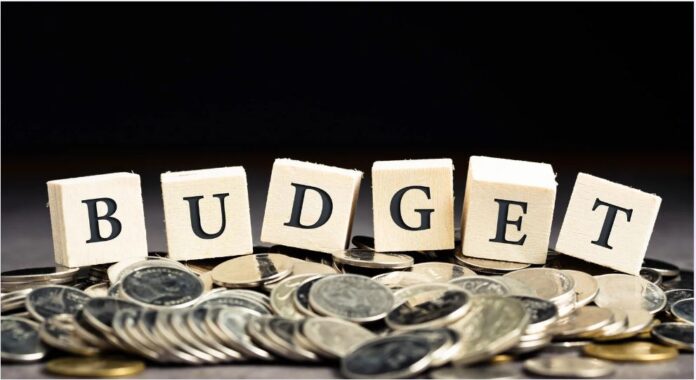The federal budget is a bunch of numbers that may or may not mean much to the people looking at it. However, these numbers have a huge impact on the lives of not only the taxpayers but every citizen of the country. Profit explains how a common man can make sense of the Rs 17.573 trillion budget announced today in the parliament house.
Central to a country’s economic policy is the annual budget. It is in this document that a government decides whether it will increase or decrease its expenditure in a particular sector. The government also projects the revenues that it will collect through taxes and other sources in the budget and it is based on those estimates that the government allocates budgets to different sectors, ministries and provinces.
Making a budget is hence an accounting exercise, with underlying policy objectives. The accounting exercise is divided into 6 essential steps namely, Preparation, Authorisation, Execution, Reporting and Monitoring, Review and Policy setting. This sounds a well-rounded approach to tackle the exercise however oftentimes, the miscalculation in the first two steps, renders the last 3 utterly moot. A good example of that would be the federal budget of FY23 which was changed majorly within days after being presented in the parliament.
The annual budget statement (ABS) is the main document for the federal budget. After the preparation and authorisation, the ABS makes its way to the senate and eventually to the public. In terms of expenditures, the ABS categorically differentiates between “Receipts” and “Expenditures”.
Revenues/Receipts
Receipts or revenue consists of balances of all budgetary receipts, e.g. Revenue Receipts, External Receipts, Public Account Receipts. Revenue receipts contain all the tax and non-tax revenue to be collected by the FBR and the government during that year.
Combined, these resources constitute federal gross revenue receipts. For the year 2025-26, the federal government has estimated this figure to be at Rs 19.28 trillion. At this step the provincial share is deducted to arrive at net federal receipts available to finance the federation’s expenditures which is going to be Rs 11.02 trillion.
It’s important to note that the distribution of revenue between the federal government and the provinces is guided by the principles laid out in the NFC Award. The award determines the share of each province in the federal revenue pool based on factors such as population, backwardness, revenue generation capacity, and other socio-economic indicators.
While this award has been highly criticised by economic experts at various levels, the provincial share in this year’s budget turned out to be Rs 8.2 trillion, of which Punjab is expected to take the most at 51.74%. It is important to note that the total amount of the NFC award is not only more than the total income tax estimated to be collected by all filers (Rs 6.8 trillion but also less than the total indirect taxes Pakistan is estimated to collect during this year i.e. Rs 7.2 trillion.
Additional resources in receipts may include privatisation proceeds plus credit from the banking sector to finance government expenditures. The government has estimated Rs.87 billion, almost at the minimum price it set for the sale of just the flag carrier PIA which was Rs 85 billion. This showcases the amount of hope the government has for the privatisation of all loss making State Owned Enterprises (SOE’s) including PIA during the next year.
Pakistan’s tax revenue (a large part of the gross federal revenue) for the fiscal year 2025-26 is projected at approximately Rs. 14,131 billion, marking a significant increase from the revised estimates of Rs. 11,900 billion in FY 2024-25. This represents a growth of around 18.5%, with the expectation that the Federal Board of Revenue (FBR) will be instrumental in meeting the targets.
In the last year, FBR’s collection has fallen short of the target, which was set at Rs. 12,970 billion, by nearly Rs. 1 trillion, with one month yet to go, a gap primarily attributed to structural inefficiencies and an expanding informal economy. In FY 2025-26, a more aggressive push is expected to bring in Rs. 12,970 billion from federal taxes alone, with a notable emphasis on improving tax compliance and modernising collection mechanisms. This means a higher extremity against the ones who fail to comply and a stronger push for broadening the net.
This can be said because tax revenue in total FY 2025-26 is expected to be largely driven by income from direct taxes, such as income tax while gaining a lot of support from corporate tax, and indirect taxes, including sales tax and customs duties. The government aims to expand the tax base, which will help mitigate the problem of tax evasion that has hindered progress in previous years.
Sales tax, the largest source of revenue under indirect taxation, will continue to be a major contributor, with rates and collections being refined through new policies aimed at enhancing revenue from sectors like services and retail. On the direct taxation side, income tax and corporate taxes will play a pivotal role, but challenges remain in addressing the high levels of under-reporting and tax avoidance.
Apart from taxes, non-tax revenues are also a critical component of the financial strategy. For FY 2025-26, non-tax revenues are expected to contribute Rs. 5,147 billion, which includes income from state-owned enterprises (SOEs) and other government entities. The government plans to continue leveraging SOEs like Pakistan Telecommunication Authority (PTA) and Oil and Gas Development Company (OGDC) to generate additional revenue.
However, the reliance on non-tax revenues also brings its own risks, as the performance of SOEs has been volatile, and there are ongoing efforts to restructure and privatise underperforming enterprises. Overall, while the tax revenue is expected to grow, challenges remain, particularly with regard to tax administration, compliance, and the unpredictable nature of non-tax revenue sources as has been seen in the previous years.
A lot of these expected receipts are reliant on high indirect taxes once again. The estimated growth of indirect taxes is up to 19% higher than the revised estimated collection target for FY24.
Sales Taxes, Federal excise duties and Custom duties all are estimated to increase by a massive amount, with just the Sales tax estimate increasing by more than 19% or almost Rs 900 billion.
Expenditures
The other part of the ABS is expenditures. Expenditure is broken down into current expenditure and development expenditure and is separately shown for expenditure on Revenue Account and expenditure on Capital Account. Expenditure on Revenue Account signifies that portion of expenditure which is met from resources such as tax revenue and receipts, whereas expenditure on Capital Account refers to expenditure which is financed from loans, finances, credits, grants, and other borrowings.
The expenditure for FY25 is estimated to be Rs 17.6 trillion, almost Rs 6 trillion more than the optimistic revenue receipts. This marks an expansion of approximately 7.2%, with the increase primarily driven by higher allocations for defence, subsidies, and social protection programs. The rise in expenditure reflects the government’s ongoing focus on national security, civil administration, and addressing inflationary pressures through targeted subsidies.
The biggest current expenditures on the revenue account that Pakistan incurs are General Public Service and Defense affairs and services. The General Public Service mainly inculcates the servicing of domestic and foreign debt. Apart from that it includes administrative and research expenditures of “General Public Service”. Meanwhile defence expenditure includes the military and defence forces cost. Collectively these two expenses are budgeted at Rs 14.768 trillion which is almost 91% of our total expenditure.
The legislative assembly is expected to have a debate over the acceptance of this budget. It will be important to see how this proposed budget and the debate surrounding it pans out.




